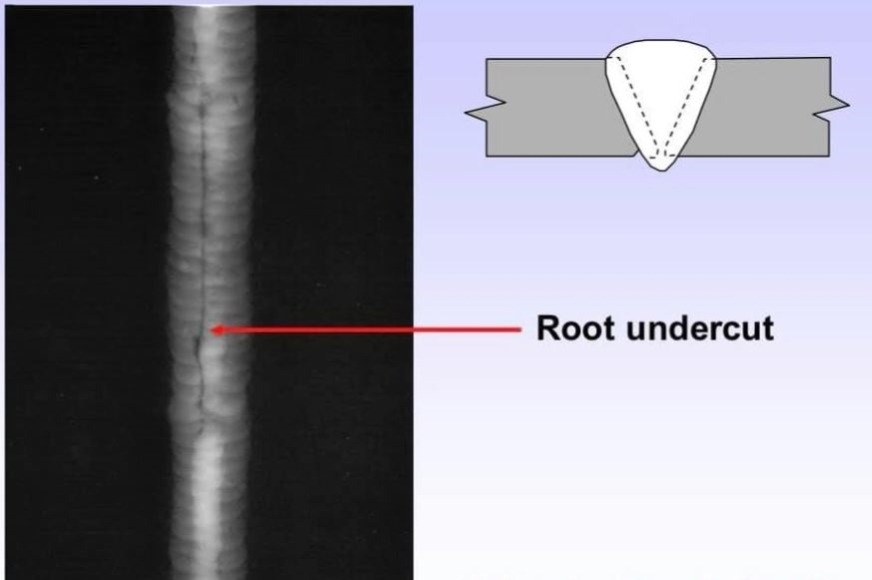Preventing Weld Undercut Made Easy: Key Techniques Unveiled
Preventing Weld Undercut Made Easy: Key Techniques Unveiled
Blog Article
Grasping the Art of Welding: How to Avoid Undercut Welding Issues for Flawless Construction Results
Performance and accuracy are extremely important on the planet of welding, where also the least flaw can endanger the structural integrity of a made item. One usual obstacle that welders face is undercutting, a defect that can weaken a weld joint and lead to costly rework. By recognizing the origin of undercut welding and executing effective techniques to stop it, welders can boost their craft to brand-new degrees of quality (Preventing weld undercut). In the search of remarkable construction outcomes, mastering the art of welding to stay clear of undercut issues is not simply a skill but a necessity for those pursuing excellence in their work.
Comprehending Undercut Welding

To protect against undercut welding, welders should ensure proper welding parameters, such as changing the current, voltage, traveling rate, and maintaining the correct electrode angle. By understanding the reasons of undercut welding and implementing preventive steps, welders can accomplish top quality, structurally audio welds.
Reasons For Undercut in Welding
Comprehending the elements that contribute to undercut in welding is necessary for welders to produce high-quality, structurally audio welds. Poor welding inaccurate or present welding speed can likewise contribute to damage. Recognizing these causes and implementing proper welding techniques can help prevent damaging problems, guaranteeing sturdy and solid welds.
Methods to stop Undercutting

To alleviate the risk of damaging in welding, welders can utilize critical welding techniques targeted at improving the high quality and integrity of the weld joints. One efficient method is to change the welding specifications, such as voltage, current, and travel speed, to make certain correct warmth input and deposition. Preserving an appropriate electrode angle and making sure constant traveling rate can additionally aid stop undercut. Additionally, making use of the proper welding method for the details joint arrangement, such as weave or stringer grains, can add to decreasing damaging. Preventing weld undercut.
Furthermore, appropriate joint preparation, including guaranteeing tidy base materials devoid of impurities and making use of the proper welding consumables, is essential in preventing undercut Full Article problems. Utilizing back-step welding methods and controlling the weld grain profile can additionally aid distribute warm evenly and reduce the danger of undercut. Regular assessment of the weld joint throughout and after welding, along with implementing quality control procedures, can aid in identifying and addressing undercutting problems without delay. By implementing these strategies faithfully, welders can accomplish perfect fabrication results with very little undercut defects.
Significance of Proper Welding Parameters
Choosing and keeping appropriate welding specifications is vital for attaining effective welds with minimal flaws. Welding criteria refer to variables such as voltage, current, travel speed, electrode angle, and shielding gas circulation price that straight impact the welding process. These parameters should be carefully adjusted based on the sort of product being welded, its density, and the welding method used.
Correct welding criteria guarantee the correct amount of heat is put on thaw the base steels and filler product evenly. If the criteria are set expensive, it can cause extreme warm input, triggering burn-through, distortion, Read Full Article or spatter. On the various other hand, if the parameters are too reduced, insufficient combination, lack of infiltration, or damaging may occur.
Quality Control in Welding Operations

Verdict
Finally, mastering the art of welding requires a thorough understanding of undercut welding, its reasons, and methods to stop it. By making sure appropriate welding specifications and executing quality control techniques, perfect fabrication outcomes can be accomplished. It is vital for welders to regularly pursue excellence in their welding operations to avoid undercut problems and create premium welds.
Undercut welding, an usual issue in welding processes, happens when the weld steel does not appropriately load the groove and leaves a groove or depression along the bonded joint.To protect against undercut welding, welders should guarantee correct welding parameters, such as changing the existing, voltage, traveling rate, and preserving the proper electrode angle. Inadequate welding present or incorrect welding rate can additionally add to undercut.To alleviate the threat of damaging in welding, welders can employ tactical welding methods intended at enhancing the high quality and integrity of the weld joints.In conclusion, understanding the art of welding requires a detailed understanding of undercut welding, its reasons, and strategies to prevent it.
Report this page